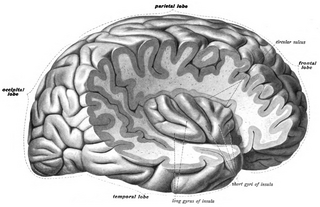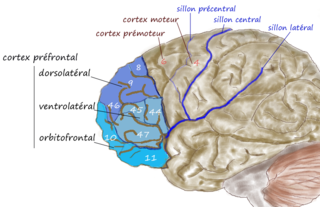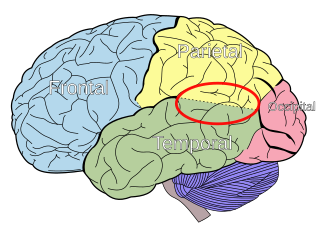Neuroimaging evidence
Jung and Haier (2007)
Jung and Haier (2007) proposed the P-FIT in a review of 37 neuroimaging studies with a total of 1,557 participants. The review included only neuroimaging techniques with high spatial resolution to examine the structural and functional correlates of intelligence. Across the structural neuroimaging studies (using voxel-based morphometry, magnetic resonance spectroscopy, and diffusion tensor imaging), Jung and Haier found that the full scale IQ scores from the Wechsler Intelligence scales correlated with frontal and parietal regions in more than 40% of 11 studies. [3] More than 30% of studies using full-scale IQ as their intelligence measure correlated with left cingulate as well as both left and right frontal regions. However, there were no observed structural correlations between regions in the temporal or occipital lobes with any of the intelligence scales. The authors attribute this contradictory finding to the task-dependency of relationships between intellectual performance and these brain regions.
Across functional studies, the authors found that more than 40% of the studies, included in the review, found correlations between bilateral activations in the frontal and occipital cortices and intelligence. In these studies, activation in the left hemisphere was usually significantly higher than that of the right hemisphere. Similarly, bilateral cortical areas in the occipital lobe, such as BA (Brodmann area) 19 were activated during reasoning tasks in more than 40% of studies. Here left activation tended also to be greater than activation in the right hemisphere. [3]
Across the functional imaging studies reviewed, the parietal lobe was consistently involved in reasoning tasks, with BA 7 activated in more than 70% of studies and BA 40 activation was observed in more than 60% of studies. [3]
In recognition of the correlational nature of neuroimaging, the authors complement their neuroimaging review with a shorter review of evidence from lesion studies and imaging genomics regarding the biological basis of intelligence. The authors conclude that the lesion evidence supports a P-FIT theory of intelligence. Further, based on the imaging genomic studies reviewed, the authors suggest a mediating role of ASPM and microcephalin genes in the relationship between volumes of gray and white matter of the areas implicated in the P-FIT theory.
Further structural imaging evidence
Haier et al. (2009) provided further neuroimaging evidence for the P-FIT by investigating the correlation between g and gray matter volume. This was in order to see whether psychometric g is consistently related to a certain neural substrate, or a neuro-g. The authors argue that previous studies examining the neural correlates of g have mostly used indirect measures of g, render the findings of these studies as inconclusive. [4] The scores of 6292 participants on eight cognitive tests were used to derive g, and a small subset of 40 participants were also scanned using voxel-based morphometry. The evidence indicates that the neural correlates of g depend on part on the type of test used to derive g, despite evidence indicating that g derived from different tests tap onto the same underlying psychometric construct. [5] The authors suggest that this may, in part, explain some of the variance in the neuroimaging findings reviewed by Jung and Haier (2007).
In the same year, a study by Colom and colleagues also measured the gray matter correlates of g in a sample of 100 healthy Spanish adults. Similar to Haier et al. (2009), a direct measure of g was derived from a battery measuring fluid, crystallized, and spatial aspects of intelligence. [6] Although finding some differences between the P-FIT theory and their results, the authors conclude that their findings support the P-FIT theory. The identified inconsistencies include voxel clusters in the frontal eye fields, the inferior and middle temporal gyrus, areas which are involved in planning complex movements, high-level visual processing, respectively. [6]
Functional imaging evidence
Vakhtin et al. (2014) determined to identify functional networks relating to fluid intelligence, as measured by both the standard and advanced versions of Raven's Progressive Matrices test. Using fMRI, Vakhtin et al. found a discrete set of networks associated with fluid reasoning, including the dorsolateral cortex, inferior and parietal lobule, anterior cingulate, as well as temporal and occipital regions. [7] The authors argue that this is "broadly consistent" [7] with the P-FIT theory. The authors scanned 79 American university students three times each, wherein one session was at 'resting state', and in the other two the participants were asked to complete problems taken from Raven's Standard and Advanced Progressive Matrices. Attentional, cognitive, sensorimotor, visual, and default-mode networks were activated during the reasoning task.










